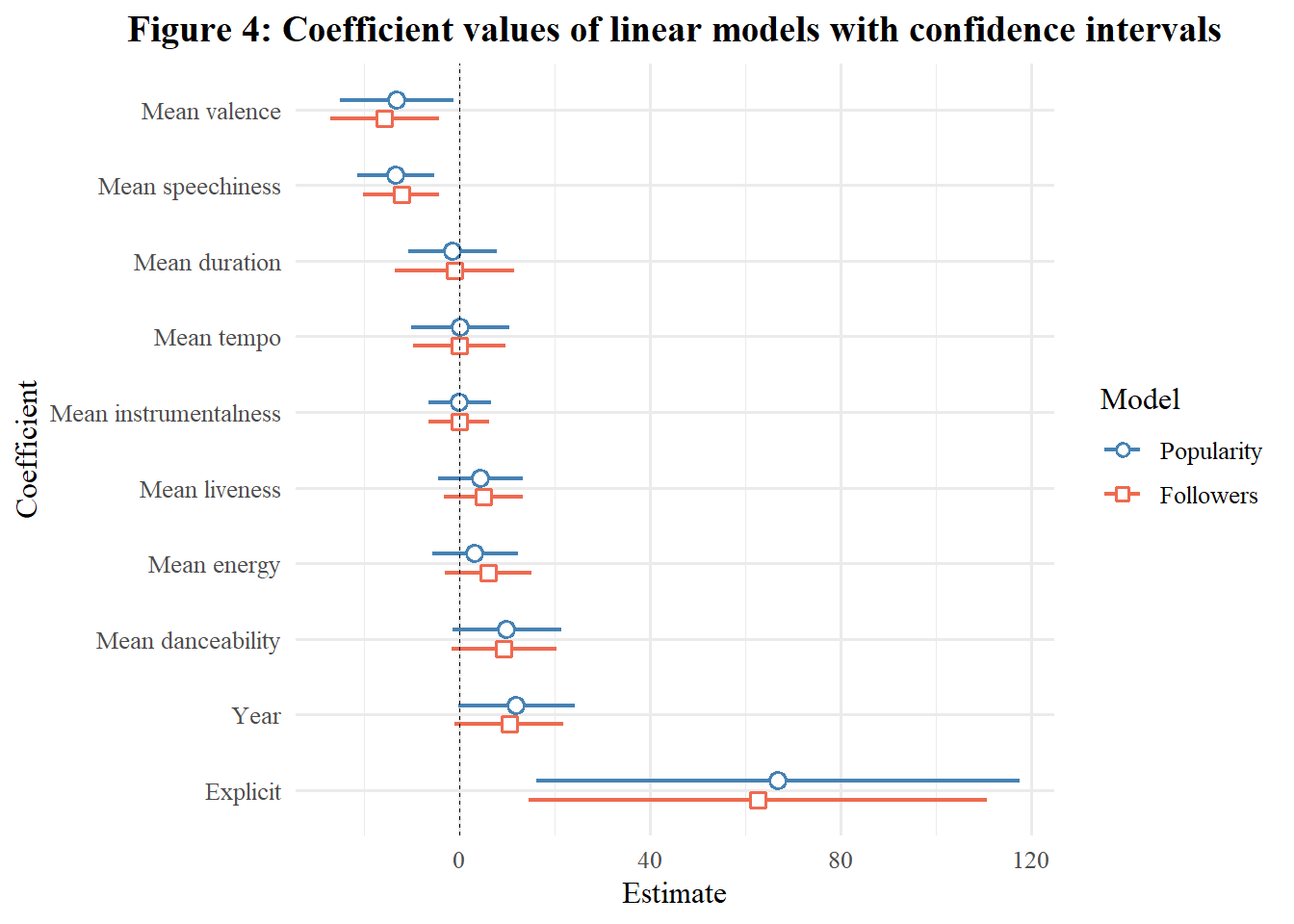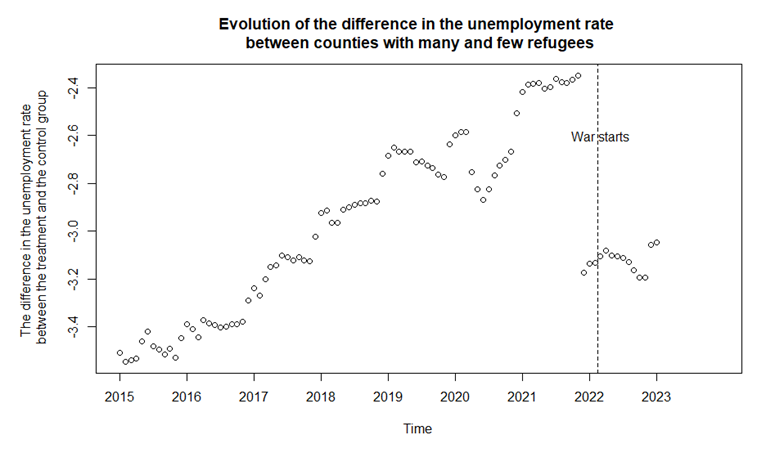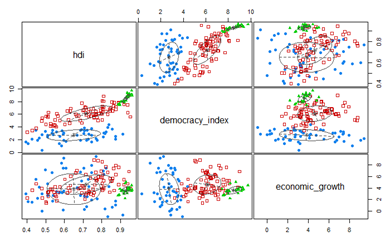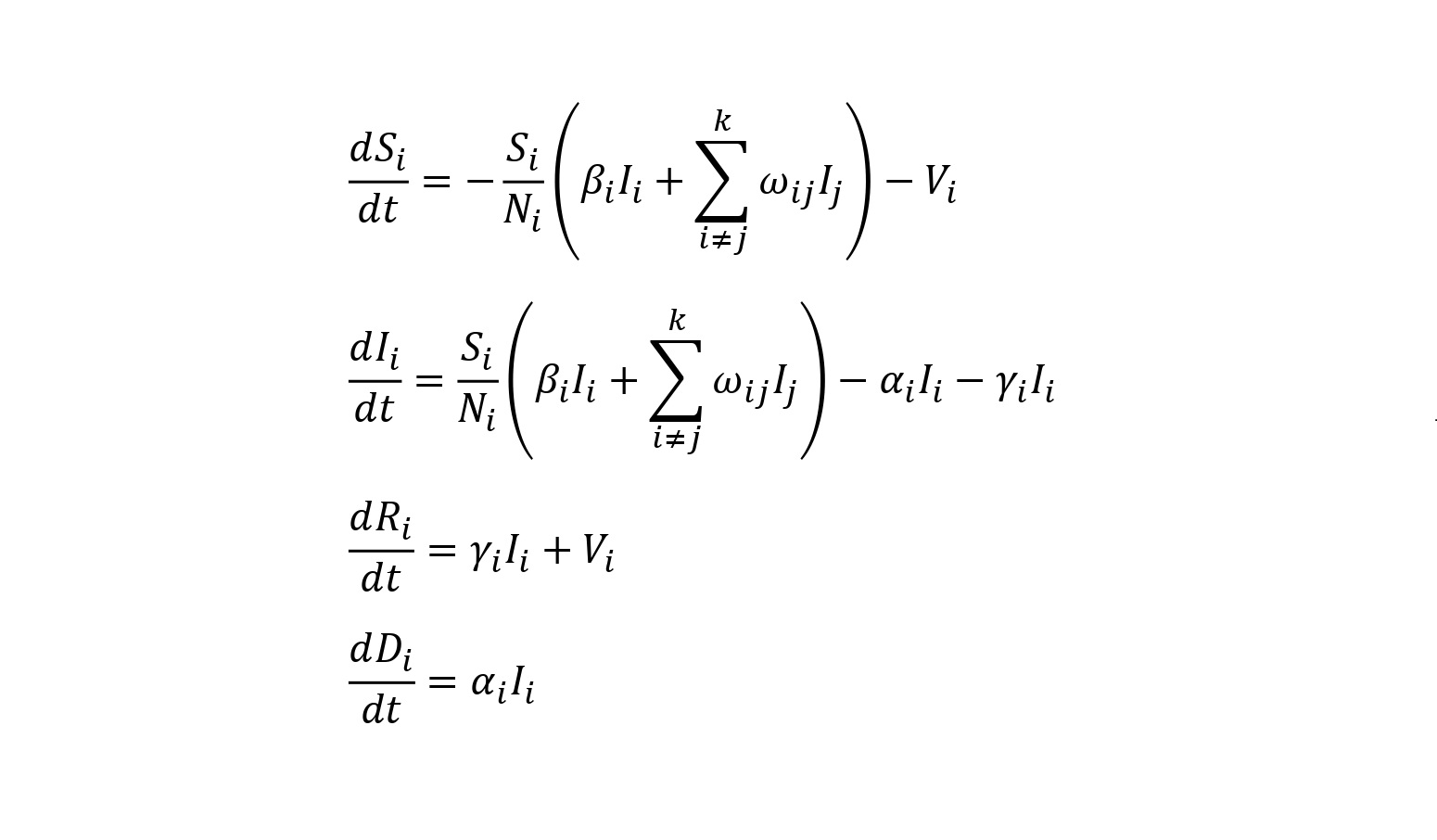Exploring changes in music taste using Spotify API
01/2024

The Rolling Stones magazine published their list of 100 Greatest Artists of all time in 2010.
The music taste has changed substantially since then, and it is interesting to see whether the artists listed there have remained popular and what explains continuous engagement.
To answer these questions, I used the Spotify API to access data on each artist's popularity and the characteristics of their music. It turns out that music enthusiasts (at least those using Spotify) have
moved away from happier songs and tend to listen to artists' whose music contains explicit content. The full analysis can be viewed here, and the corresponding
code can be accessed here.
Estimating the impact of the Ukrainian refugee crisis on unemployment in Poland
05/2023

In my undergraduate dissertation, I investigated the impact of the Ukrainian refugee crisis on unemployment among Polish citizens.
This unprecedented flow of people has markedly changed the labour market dynamics in Poland, particularly in places that welcomed many refugees relative to their population.
Despite this, I found no evidence suggesting the refugees displace Polish workers. The dissertation can be viewed here, and the corresponding
code can be accessed here.
Classifying countries by development using unsupervised learning
01/2023

Pundits often use terms such as developed or developing countries, yet there is a lot of disagreement within developmental studies about what these labels should entail.
At the same time, it is often useful to categorise countries according to their development level due to theoretical or methodological considerations. To address this, I
created a classification based on three indicators (HDI, economic growth and regime type) and a simple k-means algorithm. The report describing the entire project can be viewed here.
Optimal vaccine allocation under administrative constraints and societal interaction
04/2022

During the COVID-19 pandemic, some countries faced vaccine shortages whilst others had to dispose of them. The problem of optimal vaccine allocation is an example of a classical
constrained optimisation problem frequently found in economics. A simple pandemic model can capture some of the constraints countries have faced during COVID-19. I employed a simple
Monte Carlo greedy minimisation algorithm to understand how to allocate the vaccines under these constraints and later published my work in a student journal.
The paper can be downloaded here, and the corresponding
code can be accessed here.



